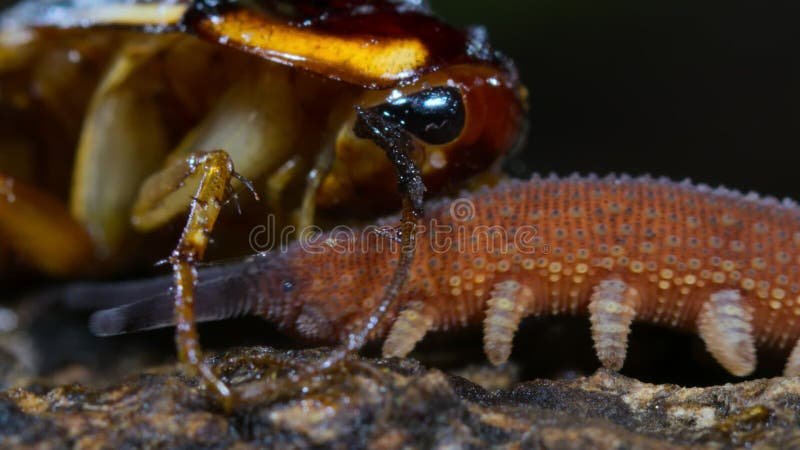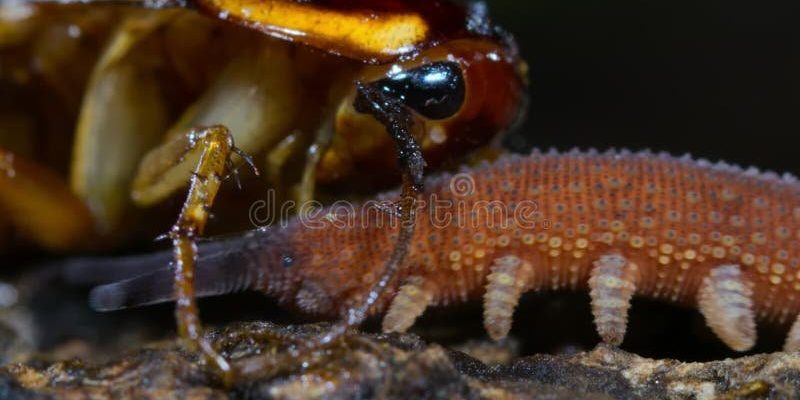
So, what’s the best way to feed these little critters? First, it’s important to understand their natural diet. In the wild, velvet worms hunt down small insects and other invertebrates. This means that in captivity, you’ll want to mimic that diet as closely as possible. Think of it like crafting the perfect meal plan, tailored just for them. A well-fed velvet worm is a happy velvet worm, and happy pets make for less stress on their owners!
Understanding Velvet Worms’ Diet
Let’s delve into what velvet worms really eat. In the wild, they are *predatory* creatures, using slime to capture their prey. Typically, they feast on soft-bodied insects like *earthworms*, *larvae*, and *small spiders*. Understanding this natural behavior is key to providing proper care.
You might be thinking, “Can I just toss any insect in their enclosure?” The answer is no. It’s vital to provide food that matches their natural appetite. Their soft bodies require softer prey that they can easily capture and consume. If the food is too tough, they won’t be able to enjoy their meal, and that can lead to health problems.
When feeding your velvet worms, consider their size. Younger worms might prefer *smaller insects*, while adults can handle larger prey. Always be attentive to their needs and growth. Just like people, velvet worms have unique preferences that can change with age.
Safe Prey Options for Velvet Worms
So, what are some safe prey options you can offer your velvet worm pets? Here’s a handy list of suitable choices:
- Earthworms: These are ideal because they are soft-bodied and easy to consume.
- Fruit Flies: A favorite among many invertebrates, they’re small and easy for juvenile velvet worms.
- Crickets: Small crickets can provide a crunchy texture, but make sure they’re not too big.
- Mute Moths: These soft-bodied insects can mimic their natural diet in a safe way.
Each of these options brings something different to the table. For instance, earthworms can be found in your backyard or purchased at a pet store, making them easy to source. On the other hand, fruit flies are a staple for tiny velvet worms that need small, manageable meals.
When deciding on prey options, always prioritize food sources that are clean and free from pesticides. Imagine feeding your pet a meal that could harm them! It’s crucial to ensure whatever you provide is safe and healthy.
How to Prepare Prey for Feeding
Now that you’ve got your prey options, let’s talk about how to prepare them for feeding your velvet worms. It’s a simple process that can make sure your pets get the best dining experience.
1. **Choose Fresh Prey**: Always pick the freshest options available. This can be as simple as grabbing a small container of earthworms or fruit flies from a local pet store.
2. **Rinse and Clean**: If you’re using something like earthworms, rinse them gently in clean water to remove any dirt or debris. Cleaning them ensures your velvet worms have a safe meal without any unwanted extras.
3. **Cut if Necessary**: For larger prey like crickets, you might want to cut them into smaller pieces. This helps your velvet worms manage their dinner more easily. You wouldn’t want a massive meal that’s hard to chew, right?
4. **Feeding Time**: Introduce the prey into the enclosure and watch your velvet worms do their thing. It’s fascinating! They’ll start to hunt and capture their food, just as they would in the wild.
One thing to remember: Always observe how your velvet worms respond to the food. If they seem uninterested or struggle, it might be time to try a different prey option.
Frequency of Feeding Velvet Worms
You might be wondering how often you should be feeding your velvet worms. The answer can vary based on their age and size. Here’s a general guideline:
– **Juveniles**: Young velvet worms should be fed every 2-3 days. They’re growing quickly and need regular meals to support their development.
– **Adults**: For adult velvet worms, feeding once every 4-7 days is typically sufficient. They require less frequent meals but make sure their portions are substantial.
It’s always a good idea to observe their behavior and adjust the feeding schedule as needed. If they seem overly hungry or are losing weight, you may need to feed them more frequently or increase the portion size. Just think of it like adjusting your own diet based on how you feel!
Common Mistakes to Avoid When Feeding Velvet Worms
Feeding velvet worms might seem straightforward, but there are common pitfalls to avoid. Here are a few mistakes that could lead to unhappy pets:
– **Overfeeding**: It’s tempting to give them more food, especially when you see them hunting. However, overfeeding can lead to health issues. Stick to appropriate portion sizes based on their age and size.
– **Feeding Inappropriate Prey**: Not all insects are suitable for velvet worms. Avoid tough-skinned insects or anything larger than your worm can handle. Always prioritize safe, digestible prey.
– **Neglecting Cleanliness**: Keeping their feeding area clean is crucial. Leftover food can attract pests and harm their environment. Regularly clean their enclosure and remove uneaten prey after a day or two.
– **Ignoring Their Preferences**: Just like us, velvet worms have preferences for certain foods. If they consistently ignore a specific prey type, it might be time to switch things up.
By being mindful of these common mistakes, you create a healthier, happier environment for your velvet worms!
Feeding velvet worms in captivity can feel a bit like solving a puzzle—it’s about finding the right pieces to create a complete picture of health and happiness. By offering safe prey options, preparing their meals thoughtfully, and establishing a consistent feeding schedule, you’ll set your velvet worms up for a thriving life.
Remember to stay observant and adjust as necessary. Every velvet worm is unique, and your attention to their needs will make all the difference. Happy feeding, and enjoy watching your little creatures come to life as they savor their meals!

